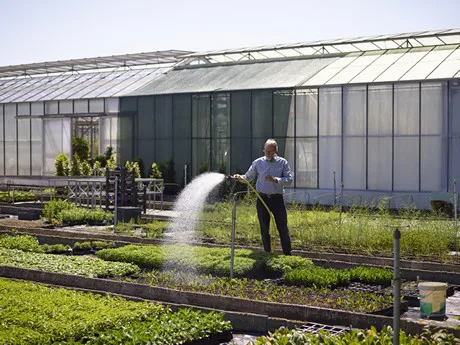
Belgian herb nursery, Kruiden Claus, grows about 300 different kinds of herbs. This makes it one of the biggest players in the Belgian herb market. "We supply our herb plants not only to garden centers and market stalls," says Lode Claus of Kruiden Claus.
"We also supply chefs and hospitality industry traders. These clients are in Belgium, the Netherlands, and France." Besides the herb plants, the nursery also cultivates edible flowers, lost vegetables, and rare strawberry varieties.
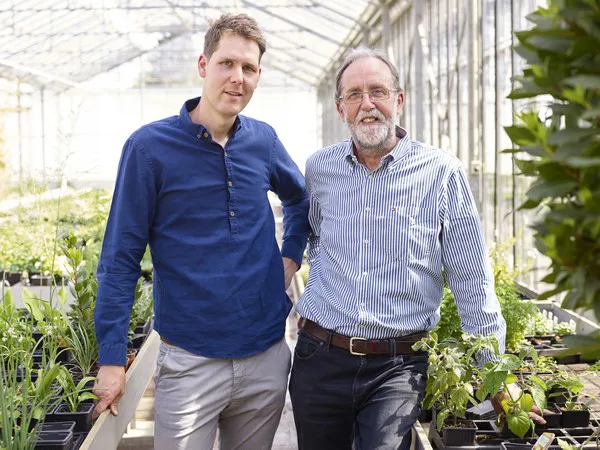
Lode and Christian Claus.
Castle gardens
This herb company was begun about 100 years ago. In 1990, great-grandfather Claus moved to France to work in the castle gardens there. He also wanted to learn more about growing herbs. After his time in France, he returned to Belgium.
Back home, great-grandpa Claus started a herb nursery in the center of the Belgian town of Kruishoutem. About 30 years ago, Lode's father, Christian Claus, relocated the business to its current 2,5-hectare site.
“We not only grow herbs at this location. We have also started wide-ranging activities. These include tours and workshops for individuals and companies. Chefs come to visit us for inspiration too," says Lode.

Popular herbs
“The classic herbs like thyme, rosemary, and basil remain popular. We have, however, noticed that the hotel, restaurant, and catering industry is looking for novelties. Chefs want to distinguish themselves. They do so by using new, surprising herbs," continues Lode.
Silt herbs are becoming increasingly popular. These include oyster leaf, sea fennel, Salicornia, Scotch Lovage, and sea lavender. "But orange and lemon thyme are also up-and-coming herb varieties. A few years ago, these were hardly ever used in the kitchen."
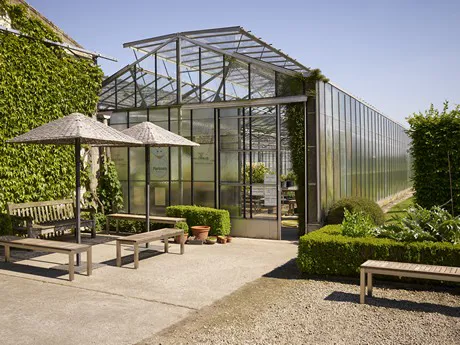
The greenhouse entrance.
The Netherlands vs. Belgium
“Although these countries are neighbors, herb consumption differs drastically between the two. In the Netherlands, there is a high demand for Asian herbs. These include Vietnamese coriander and wasabi. There is also much demand for mint varieties. These are used a lot in that country for teas and herbal water."
"It is also striking that we sell a lot of herbs with a licorice flavor to our northern neighbors," explains Claus. “In Belgium, the demand for French celery is high. This herb is used mainly in soups. Savory is also very popular in Belgian cooking."
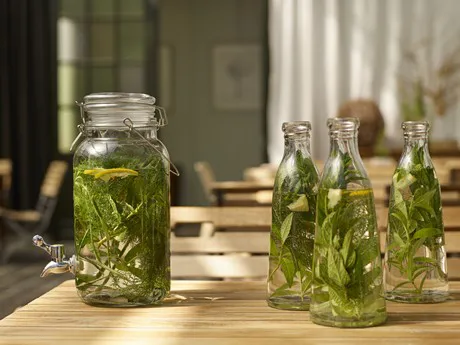
Seasonal cultivation
Kruiden Claus deliberately grows according to the season. "We do not cultivate basil in the winter - it is a true summer plant. We want to grow plants that last a little longer. That is why our method of cultivation differs greatly from hydro cultivation. Mid-March to mid-July is our peak season. In these months, we have almost 300 kinds of plants in stock. It is a lot of work," laughs Lode.
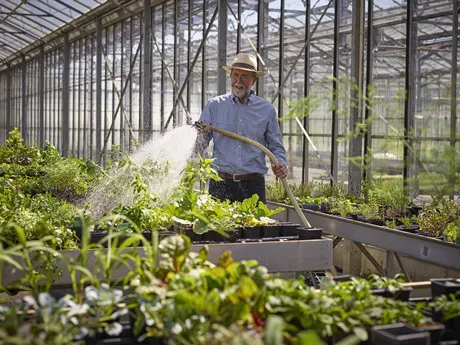
There is the nursery, workshops, and tours. Besides all this, Lode and Christian have also written three books about herb cultivation. A Dutch publishing house published these. That means they are also available in the Netherlands.
“People often have very limited knowledge of herbs. So, we try to teach them. We do so through our many activities and these books. We try to introduce people to as many different kinds of herbs as possible. In this way, we can stimulate herb consumption," concludes Lode.
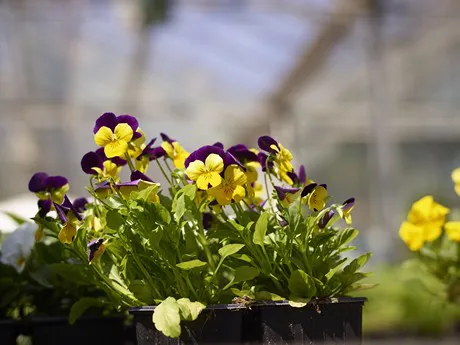
Edible violets.
For more information:  Lode Claus
Lode Claus
Kruiden Claus
1 Beer Street
9770 Kruishoutem, BE
Tel: +32 (0) 498 106 733
info@kruidenclaus.be
www.kruidenclaus.be
